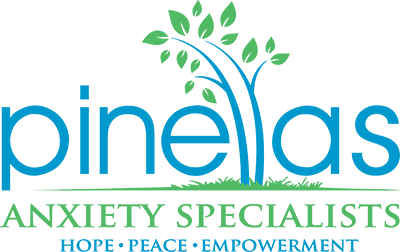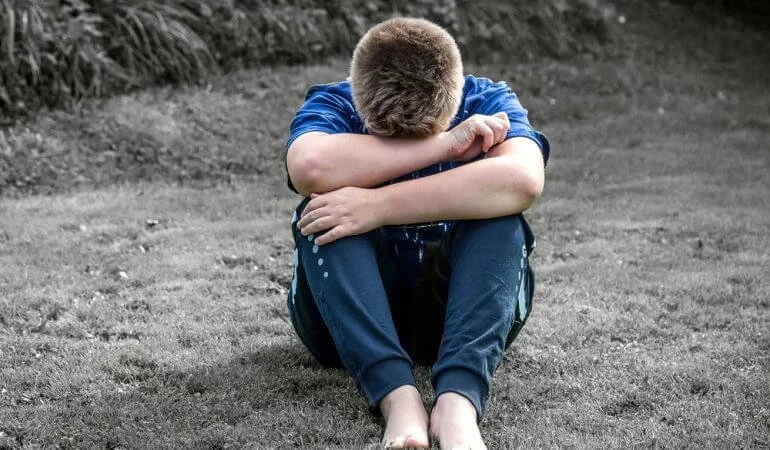Mindfulness Meditation
Chances are, you’ve heard the term mindfulness at some point over the last few years. The concept is thousands of years old, but it has only gained recognition as a stress coping tool in the west more recently. As John Kabat-Zinn, PhD developed what ultimately became known as Mindfulness Based Stress Reduction (MBSR) in the 1980s, he found a way to teach and implement the technique so that was accepted by those in our culture. Over the past decade there have been articles written on applying mindfulness to CEOs, musicians, child-rearing, as well as coping with stress and anxiety symptoms. I hope to address some of the misconceptions people often have about the practice of mindfulness, and also describe how you can begin to practice on your own.
Chances are, you’ve heard the term mindfulness at some point over the last few years. The concept is thousands of years old, but it has only gained recognition as a stress coping tool in the west more recently.As John Kabat-Zinn, PhD developed what ultimately became known as Mindfulness Based Stress Reduction (MBSR) in the 1980s, he found a way to teach and implement the technique so that was accepted by those in our culture. Over the past decade there have been articles written on applying mindfulness to CEOs, musicians, helping parents with their children, as well as coping with stress and anxiety symptoms.I hope to address some of the misconceptions people often have about the practice of mindfulness, and also describe how you can begin to practice on your own.
What is mindfulness?
Simply put, mindfulness is being aware of the present moment.Sure sounds easy, right? It’s actually an incredibly easy thing to learn, but it takes a lifetime to master.So let’s practice. For the next minute, just be aware of the present moment.Welcome back. I’m guessing you probably made it about five or ten seconds before your mind drifted to the grocery list, picking up your child from daycare, or something your partner said that was hurtful. And that’s where the practice comes in, because our mind is always on. We can’t shut it off, and we wouldn’t want to because, well, that would mean we’re dead.It’s pretty typical that most of us spend the majority of our time outside awareness of the present moment.We are either pulled into the future, thinking of all the things that we need to do, or worrying about something. Or, we’re pulled into our past and thinking of things that have happened to us. Usually when we’re stressed, anxious, and overwhelmed, those thoughts are primarily negative and unpleasant.We might spend time trying to push them away, or ignore them. Of course doing that only makes them come back stronger.Don’t believe me? Okay then, do NOT think of a pink elephant for the next 30 seconds.That’s what I thought. So if ignoring the bad thoughts doesn’t work, what do we do about them? Valid question and we will get there.
Why should I do it?
When they examine the brains of those who practice mindfulness, they find actual structural changes.Taking the time to stay focused on the present moment, improves our brain’s ability to… stay focused on the present moment. This means that if you tend to find yourself getting hooked by negative thoughts, by practicing mindfulness regularly, you will likely develop the ability to notice the thought earlier and refocus your attention before your mood turns negative.Additionally, because mindfulness focuses on nonjudgmental awareness, people can often become more self-compassionate and not as caught up in holding themselves to unrealistic standards of perfection.
How do I do this mindfulness thing?
When mindfulness is brought up, it’s typically in conjunction with meditation. I’ve intentionally avoided using that word until now because it raises some concerns for people.They typically tell me, “I’ve tried but it doesn’t work for me. My mind just does not go blank.” As I mentioned before, I’m glad they are still alive as that is about the only prerequisite for meditation.The purpose of meditation is to NOTICE what you are THINKING and FEELING. Did I say it was to have a blank mind? Did I say it was to relax? Nope.Mindfulness meditation is simple. You take time to notice what you are thinking and feeling in a nonjudgmental way.That means if you feel an ache or pain, you don’t curse it as bad, you just notice it. If you have a thought pop into your head, you don’t shove it away, you just notice it.Mindfulness meditation takes a lifetime to master because your mind and body will bombard you with thoughts and feelings that will hook your attention, and make it hard to “just notice in a nonjudgmental way!”
The process
Introduction to mindfulness meditation typically focuses on the breath. It’s convenient because it’s always there, and it’s moving so it gives you something to focus on that is inherently the present moment.With your eyes closed (or open) begin to focus on your breath. There’s no need to change it. Just notice your in-breath, and your out-breath.Your attention may be on the rise and fall of your chest or abdomen, or on the sensation at your nostrils. Notice any warmth or coolness. Any tension or discomfort. For the next five breaths, just notice anything associated with your breath.When you’ve completed those breaths, return to the room and take note of any sounds going on around you.
What to do about the thoughts?
If you’re like me, within about 30 seconds you’ve had thoughts start to pop into your head.Remember, our goal is not to have a clear mind, but to notice the present moment in a nonjudgmental way. Those thoughts are a part of your present moment, though they are a distraction from focusing on your breath.What we do is acknowledge the thought, “thank you, mind,” and then return your focus to the breath. Sometimes it can be helpful to visualize putting the thought on a cloud that is slowly drifting away, or a leaf that is floating down a creek.We’re not shoving the thoughts away, but acknowledging their presence, and then letting them drift away as we return to the breath.Whether this happens twice or 200 times during a 5 minute meditation, the success is in noticing the thought, non-judgmentally acknowledging it, and returning.
Implementing mindfulness meditation practice
Generally I recommend practicing once a day for 5 to 10 minutes. That is enough to begin seeing some of the benefits I noted earlier.As with any kind of behavior change, it’s helpful to have a fairly consistent schedule for practicing. I like to do mine first thing in the morning when the kids are still asleep.Some people meditate in silence or with soothing music, I prefer guided meditation through several smartphone apps (Calm, Headspace, 10% Happier).The important thing is that you try a few different things to see what is most likely to help you be consistent in your practice.And if you’re interested in a book on how mindfulness meditation can transform a Type A personality, I recommend 10% Happier by Dan Harris.
Guided body scan mindfulness meditation
Non-meditation mindfulness
If meditation just isn't your thing, you can still benefit from mindfulness. Any easy way to do this is to notice five things in the room. Pretend like you are a little child who is noticing these things for the first time. See how the shading appears. Are there textures you can see? Really examine those five items, and if you notice your thoughts pulling you away just let the thoughts drift away and refocus on the items in the room.If you'd like to discuss your challenges more specifically, please schedule a free 30 minute consultation today. You can also give me a call at 727-498-1809 or shoot me an e-mail.
Visualization: A Vacation Inside Your Own Home
When we feel stressed, anxious, or overwhelmed, it’s certainly not uncommon for our mind to race. We may not even know where half the thoughts are coming from, but they seem to be hitting us left and right. We would do just about anything to quiet our minds and have some peace! So we try not to think about the stressful thoughts…. BOOM, they come back stronger than ever. Of course with the mind/body connection, those anxious thoughts lead our body to respond in all sorts of uncomfortable ways. The deep breathing and progressive muscle relaxation techniques discussed in the last two blogs were focused on the body. The hope was that promoting relaxation in the body will also quiet the mind. Again, for some people that is the case, but for others it seems like their mind goes into overdrive when they try deep breathing. Visualization is one of the techniques we can use to both relax the body, but also engage the mind in a way that makes it difficult for those negative thoughts to race through.
This is the third in a series of blog posts on relaxation techniques for reducing stress and anxiety symptoms . Please check out the links to learn more about deep breathing and progressive muscle relaxation.When we feel stressed, anxious, or overwhelmed, it’s certainly not uncommon for our mind to race. We may not even know where half the thoughts are coming from, but they seem to be hitting us left and right.We would do just about anything to quiet our minds and have some peace! So we try not to think about the stressful thoughts…. BOOM, they come back stronger than ever.Of course with the mind/body connection, those anxious thoughts lead our body to respond in all sorts of uncomfortable ways. The deep breathing and progressive muscle relaxation techniques discussed in the last two blogs were focused on the body.The hope was that promoting relaxation in the body will also quiet the mind. Again, for some people that is the case, but for others it seems like their mind goes into overdrive when they try deep breathing.Visualization is one of the techniques we can use to both relax the body, but also engage the mind in a way that makes it difficult for those negative thoughts to race through.
Visualization To Reduce Stress
With visualization, our goal is to have you imagine that you are in one of your “happy places.” It can be helpful to have an idea of 2 or 3 of your favorite places where you can feel completely relaxed.For many people it may be the beach, or a mountain retreat, or their own comfy bedroom. It’s important to pick locations that provide you relaxation.Now I wish it was as easy as just thinking of your happy place. But I’m sure you’re thinking that wouldn’t work, and you’re right.For visualization to work, we need to involve all five of our sensory organs. Let’s do a basic anatomy review. Our five senses are touch, sight, hearing, taste, and smell.While we usually just “see” a place when we imagine it, it’s possible to imagine our relaxing place and exactly what all five of our senses would be experiencing if we were actually there. That is how visualization works.
How Does This Reduce Anxiety Symptoms?
Very briefly I want to mention why this works in bringing about relaxation. Our brain is comprised of something like 86 billion nerve cells, or neurons. Every thought we have, and everything our body does is controlled by these tiny little cells.Just reading this sentence has nerve cells telling your eyes to move, your brain to interpret the pixels as letters, and allows you to understand them as English. Each action we take has a certain pattern of nerve cells that get activated.As these neurons fire together more and more often, it makes it easier to engage in the task at hand, which is called learning, or muscle memory for those into sports.If you ever watch Olympic downhill skiing, you’ll notice the skier very focused in the moments before their run. That focus has them visualizing themselves going through the course, successfully navigating every turn and jump.That’s because the same neurons that fire while they are actually skiing the course are activated while they visualize it.When we visualize our relaxing place, what we’re doing is activating those relaxed brain cells that remember how calm you were when you were in that situation.Visualization also has the added benefit of actively engaging your brain, which makes it more difficult for negative thoughts to intrude.
Practicing Visualization
Find a nice comfortable position and take two long, slow deep breaths (continue these throughout).Now think of the happy place you identified and imagine that you are there in this moment.Take a look around and notice the small details of what you can see. Listen to any sounds that might be going on in the moment.Notice if you feel any warmth from the sun, or a breeze, or your favorite soft blanket.Take a big whiff of the air and see if you smell anything in particular. And finally notice any tastes that may be happening. Spend about five minutes focused on slow, deep breaths, and deeply noticing how your five senses are reacting in your happy, calm place. If you're feeling stressed, anxious, or overwhelmed and think that a relaxation technique isn’t enough, and that talking to someone would be helpful, please reach out to me and we will get you started on the path to taking back control of your life. I provide free 30 minute consultations that you can sign up for through the button below, or you can e-mail or call 727-498-1809.
Reduce Stress with Progressive Muscle Relaxation
This is my second post in a series on relaxation techniques for coping with stress or anxiety. If you want to read my first post on deep breathing, you can find it here. In this post, I will go over how to practice progressive muscle relaxation. This technique can be especially helpful for those who carry their stress as tension in their muscles. It may not be quite as enjoyable as a Swedish massage, but it’s a heck of a lot cheaper and there’s no need to schedule an appointment! You’ll need about 10 free minutes and a quiet place that you can have some privacy. This one is not quite as easy to use in public like deep breathing.
This is my second post in a series on relaxation techniques for coping with stress or anxiety. If you want to read my first post on deep breathing, just click on the link. In this post, I will go over how to practice progressive muscle relaxation. This technique can be especially helpful for those who carry their anxiety symptoms or stress as tension in their muscles. I know most moms might not find it quite as enjoyable as a Swedish massage, but it’s a heck of a lot cheaper and there’s no need to schedule an appointment! You’ll need about 10 free minutes and a quiet place that you can have some privacy. This one is not quite as easy to use in public like deep breathing.
Progressive Muscle Relaxation
When you feel tense, what do you do to relax? What I hear most often is Netflix, with hot tub, and massage as muscle-specific relaxers. If you’re enjoying this golden age of television, I won’t tell you there isn’t a place for it, but that is considered passive relaxation. Passive relaxation is not doing much of anything and just giving yourself a break. This is good, and necessary at times, but does not actually induce the body to promote a physiological relaxation response. That’s where active relaxation techniques like deep breathing or progressive muscle relaxation come in handy. Active relaxation is doing something to bring about the body’s relaxation response.With progressive muscle relaxation, we work our way through the muscle groups in a systematic way, alternating tensing the muscles for a few seconds and then slowly allowing them to relax. When we’re stressed, our muscles are often more tense on their own, and we want to exaggerate that tension by flexing the muscle before releasing. It doesn’t seem to make a lot of sense, but by exaggerating the tension and slowly releasing, the muscle ends up more relaxed and less tense than it was beforehand. As you are isolating each muscle group, notice the tension you feel before you start, and compare it to what you feel afterwards. Noticing that difference helps to reinforce the calming effects. You almost need to practice it to believe it, so here’s my video walking you through the exercise. So you can see that this isn’t something you can easily do in public, but it may be worth carving out some time for yourself at home if muscle tension is a problem for you. If you combine this technique with the slow breathing I discussed in my last post, it can be an even more powerful tool. I also want to stress that everybody’s mind/body react differently, and it is okay if this tool doesn’t work for you. Keep experimenting with the many different options and I know you’ll find something to help you feel more calm, reduce your stress, or ease you anxiety symptoms.If you're feeling stressed, anxious, or overwhelmed and think that a relaxation technique isn’t enough, and that talking to someone would be helpful, please reach out to me and we will get you started on the path to taking back control of your life. I provide free 30 minute consultations that you can schedule through the button below, or you can e-mail or call 727-498-1809.
Deep Breathing for Relaxation
When we get upset, the first reaction people have is to say “calm down!” or “relax!” Of course we all think the same thing when someone tells us that, “IF IT WAS THAT EASY, I WOULD HAVE DONE IT ALREADY.” So, yeah, when a friend of yours is upset, please do not just tell them to calm down or relax… it’s not helpful. So what is helpful? How do we actually calm down and relax? There are a few techniques I’ll cover in my next few posts that you can experiment with. They work for most people, but everybody is a little different in what their mind/body need to promote a sense of calm.
When we get upset, the first reaction people have is to say “calm down!” or “relax!”Of course we all think the same thing when someone tells us that, “IF IT WAS THAT EASY, I WOULD HAVE DONE IT ALREADY!!!”So, yeah, when a friend of yours is upset, please do not just tell them to calm down or relax… it’s not helpful.So what is helpful? How do we actually calm down and relax when we feel overwhelmed with stress or anxiety?There are a few techniques I’ll cover in my next few posts that you can experiment with.
Deep Breathing to reduce anxiety symptoms
Another common refrain when we’re upset is someone saying to “take a deep breath.”Usually we ignore them because we’re upset.This actually is the number one easiest way to help reduce stress/anxiety/anger in the moment… when you remember it… and when you do it properly!! “Do it properly? But it’s just taking a deep breath, right?”Not exactly. Most of us take deep breaths only when the doc asks us to during our annual physical, or when we’ve had to chase our two year old around the yard for too long.Those deep breaths are helpful for the doctor to hear our lungs, and to replenish the oxygen used by our muscles during the exercise, but not so much for relaxation.To achieve the benefits of relaxation, we really want to focus on taking long, slow, deep breaths.To start, focus on a slow in breath through the nose, and having your belly expand at the beginning. This ensures we are filling the full capacity of our lungs. Our normal breaths are often focused up in shoulders.Expand the belly first, and then slowly continue to fill the lungs to a full, but comfortable capacity. Then, pause for one second before slowly allowing all the air to escape through your mouth.Continue exhaling until the lungs are comfortably empty. Repeat these slow, deep breaths three to five times in a row.Most people tell me that their anxiety or stress levels drop a couple notches, say from an 8 to a 6, just by spending one minute doing this.Watch my video here for a demonstration.In person, after I do this demonstration, most people tell me they are surprised at just how slow it actually is.
How does this reduce stress?
When we feel stressed or anxious, our body literally goes into fight, flight, or freeze mode. This sets off a chain reaction and our muscles tense up, our breathing becomes shallow, our heart rate increases, etc.All those things are actually really good if our life is in jeopardy. But not so good when they're happening on a daily basis.When we are able to slow down our breathing with this technique, it sends a signal to the brain that we are not really in danger and that it's okay to relax.Consider this, if a crocodile was staring at you ready to pounce, would you physically be able to slow your breathing?NOT LIKELY!!!So when we do slow down our breathing, it often helps take down our stress or anxiety levels a couple notches.I also love this deep breathing technique because it’s so simple! You can do it anywhere without anybody knowing you’re using a coping skill.Literally, I was in a job interview once and did this while the interviewer was talking and he was none the wiser.If you want to give it a shot, practice a couple times a day when you're not feeling particularly stressed.That way you build the muscle memory to be able to use the skill when you really need it!I like to do it right before I fall asleep, but you can find a time that is convenient for you. That could be getting into the car, after waking up, or at meal time.If you're feeling stressed, anxious, or overwhelmed and think that a relaxation technique isn’t enough, please reach out. Let's get started on the path to taking back control of your life. I provide free 30 minute consultations that you can schedule through the button below, or you can e-mail or call 727-498-1809.
Anxiety sucks!
If you read the word anxiety and can immediately think of five things stressing you out, I’m hoping you’ll find some relief with this and future blog posts. I plan to spend quite some time writing about the different types of anxiety, why we get anxious, various ways to treat it, and provide tips you can implement right away to start taking charge of your life again. Let’s start with the good news. Those people who are sick of anxiety and make the decision to seek help often see reductions in their anxiety symptoms and an improvement in their quality of life! The bad news is that of the 40 million Americans with a diagnosable anxiety disorder, only one-third reach out for help
Janice is a hard working high schooler who does all her homework, completes projects on time, and gets extra help from the teacher. She just cannot seem to score well on tests.Justin graduated near the top of his class at law school, but his practice is floundering because just the thought of networking puts him into a cold sweat.Tonya is a married mother of two teenage boys. She has not had a good night’s rest in years because at bedtime her mind races with vivid images of her sons... in car accidents... overdosing on drugs... falling down stairs… moving away and never speaking to her again…What do these 3 people have in common? Anxiety.[embed]https://www.youtube.com/watch?v=NS6KsZDNKEU[/embed]If you read that word and can immediately think of five things stressing you out, I’m hoping you’ll find some relief with this and future blog posts.I plan to spend quite some time writing about the different types of anxiety, why we get anxious, various ways to treat it, and provide tips you can implement right away to start taking charge of your life again.Let’s start with the good news. Those people who are sick of anxiety and make the decision to seek help often see reductions in their anxiety symptoms and an improvement in their quality of life!The bad news is that of the 40 million Americans with a diagnosable anxiety disorder, only one-third reach out for help.
Anxiety Disorders
Generalized Anxiety Disorder - Excessive worry, more than is warranted by life events. The worry is not easily controlled and causes problems in some area of life.
Panic Disorder - Panic attacks (e.g., shortness of breath, chest tightness, dizziness, feeling of losing control, etc.) occur out of the blue causing the individual to worry if or when the next attack will occur.
Agoraphobia - Fear of being in public places or places where escape would be difficult.
Social Anxiety - Fear of being judged by others resulting in the avoidance of certain social situations.
Health Anxiety - Fear that bodily sensations could possibly be a terrible illness.
Separation Anxiety - Primarily in children, fear of separation from caregivers.
Specific Phobias - Strong fear reactions to specific situations (e.g., driving over bridges, spiders, needles, heights etc.).
As you can see, the unifying thing between the various anxiety disorders is worry that negatively impacts life. If you aren’t sure if you fit neatly into one of the categories above, that’s okay! As long as you are sick of the fear, done with missing out on important events, and ready to feel joy again, then help is available!
Why do we feel anxiety?
I always ask my patients whether anxiety is good or bad, and invariably they say, “it’s TERRIBLE!”Then I usually ask them what would happen if they smelled smoke in their house. They would bound out of bed, collect the kids, and get out the front door lickity split!I hope if any of us ever face that scary situation, we are able to react quickly and get everybody out safely. And when we do, we can thank our body’s response to anxiety.That's right, anxiety can be good!When anxiety hits, our body goes into FIGHT - FLIGHT - FREEZE mode. The entire purpose is to prepare our bodies to survive a life threatening situation.Either to fight off a dangerous attacker, to run away from the danger, or to stay still until the danger is gone.Without this response, the human race would not have survived the many perils we have faced over the years.Thank goodness for anxiety… sometimes.The problem is that anxiety comes up when it's really inconvenient for us today. Janice will not literally die if she fails the big test. Justin will survive not having a thriving practice. And Tonya’s children seem to be making it through their teenage years just fine.For some reason, our mind can interpret non-life threatening situations in ways that spark our fight-flight-freeze response.In the short term, that wouldn’t be a big deal since we would just make it through the situation and be done.Anxiety symptoms become a disorder when they happen too often and negatively impact our ability to function in an ongoing basis. When it keeps coming up, we start to avoid the situations that raise our anxiety. As time goes on and we avoid more and more situations, our world shrinks and we miss out on important parts of life.BUT THERE IS HOPE!It does not need to stay that way! You can expand your world and not allow anxiety to keep the control that it has right now.I specialize in helping people shake the burden of anxiety off their back, and move forward feeling more free to actually decide what to do each day.Often times we begin with strategies to help reduce anxiety in the moment, such as relaxation (see my videos). We then work together to better understand how anxiety is limiting your life, how you would like things to be, and then we develop a personalized plan for how to get you there. I will go into more detail on other types of anxiety treatments later.If you have any questions, or want to schedule a free 30 minute consultation, please click the button below, send me an email at kevin@hydepsychology.com or give me a call at 727-498-1809.















